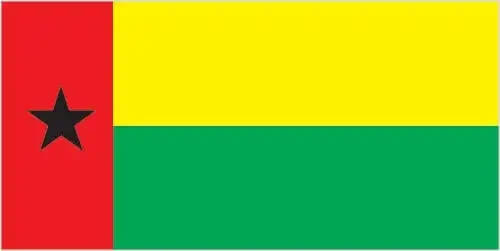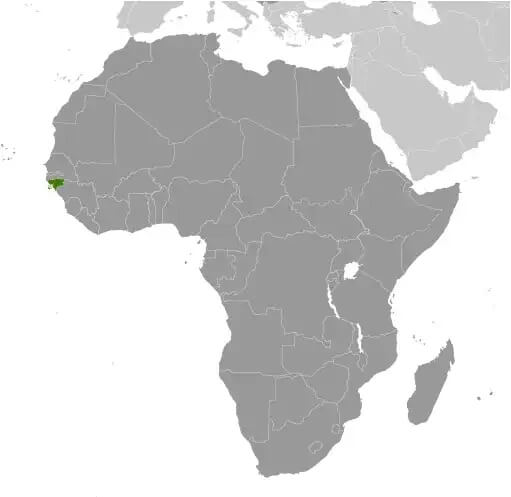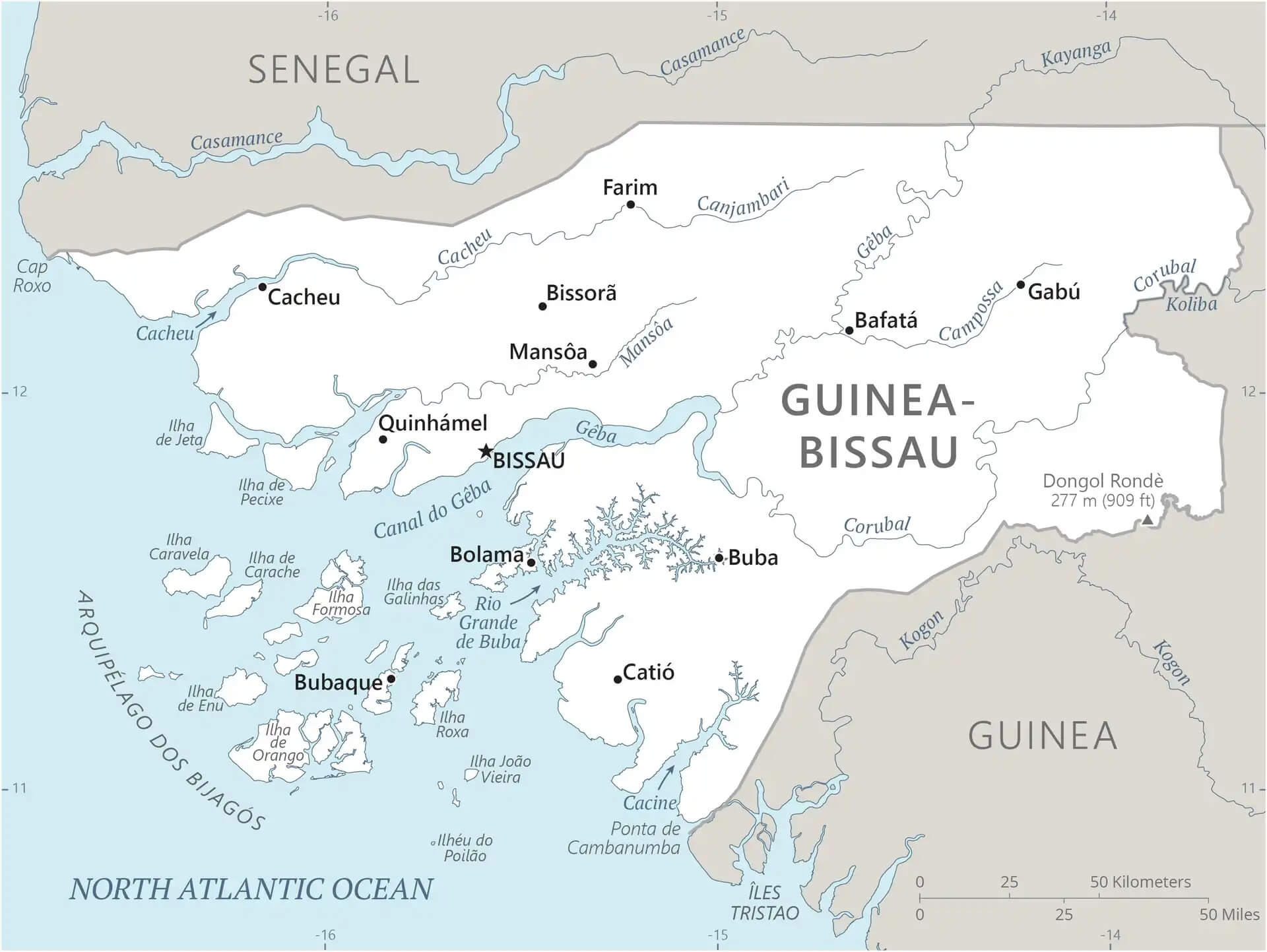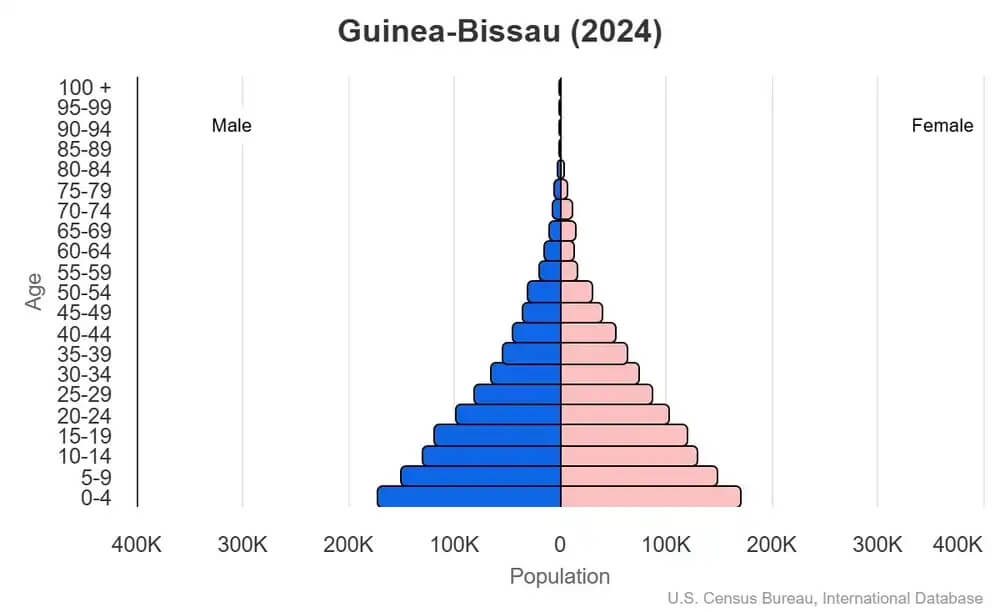World Book
Guinea-Bissau
Introduction
Background
Since independence from Portugal in 1974, Guinea-Bissau has experienced considerable political and military upheaval. Guinea-Bissau’s history of political instability, a civil war, and several coups (the latest in 2012) have resulted in a fragile state with a weak economy, high unemployment, rampant corruption, and widespread poverty.
Geography
Area
total : 36,125 sq km
land: 28,120 sq km
water: 8,005 sq km
Climate
tropical; generally hot and humid; monsoonal-type rainy season (June to November) with southwesterly winds; dry season (December to May) with northeasterly harmattan winds
Natural resources
fish, timber, phosphates, bauxite, clay, granite, limestone, unexploited deposits of petroleum
People and Society
Population
total: 2,132,325 (2024 est.)
Ethnic groups
Balanta 30%, Fulani 30%, Manjaco 14%, Mandinga 13%, Papel 7%, unspecified smaller ethnic groups 6% (2015 est.)
Languages
Portuguese-based Creole, Portuguese (official; largely used as a second or third language), Pular (a Fula language), Mandingo
Religions
Muslim 46.1%, folk religions 30.6%, Christian 18.9%, other or unaffiliated 4.4% (2020 est.)
Population growth rate
2.54% (2024 est.)
Government
Government type
semi-presidential republic
Capital
name: Bissau
Executive branch
chief of state: President Umaro Sissoco EMBALO (since 27 February 2020)
head of government: Prime Minister Braima CAMARA (since 7 August 2025)
Diplomatic representation in the US
chief of mission: Ambassador Maria Da Conceição NOBRE CABRAL (since 18 September 2024)
Diplomatic representation from the US
chief of mission: Ambassador Michael RAYNOR (since 20 April 2022)
Economy
Economic overview
extremely poor West African economy; ethnically diverse labor force; increasing government expenditures; slight inflation due to food supply disruptions; major cashew exporter; systemic banking instabilities and corruption; vulnerable to oil price shocks
Real GDP (purchasing power parity)
$5.912 billion (2024 est.)
$5.64 billion (2023 est.)
$5.399 billion (2022 est.)
Real GDP per capita
$2,700 (2024 est.)
$2,600 (2023 est.)
$2,600 (2022 est.)
Exports
$284.5 million (2023 est.)
$280.065 million (2022 est.)
$334.904 million (2021 est.)
Exports - partners
India 66%, Chile 9%, Cote d'Ivoire 5%, Ghana 4%, Netherlands 3% (2023)
Exports - commodities
coconuts/brazil nuts/cashews, fish, fish oil, processed crustaceans, malt extract (2023)
Imports
$592.095 million (2023 est.)
$577.899 million (2022 est.)
$518.162 million (2021 est.)
Imports - partners
Senegal 28%, Portugal 24%, China 11%, Gambia, The 10%, Pakistan 4% (2023)
Imports - commodities
refined petroleum, iron bars, rice, plastics, flavored water (2023)
Human Development Index
The country's Human Development Index (HDI) is 0.514, ranking it 174th out of 193 countries tested. (more information)



